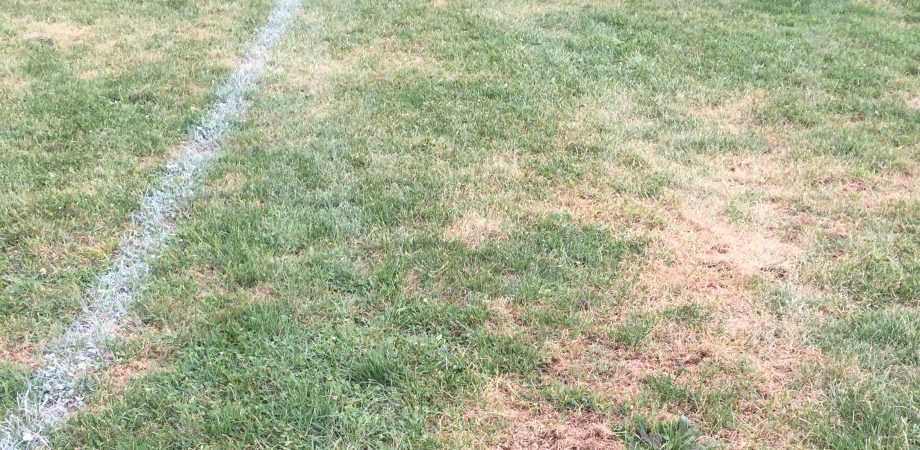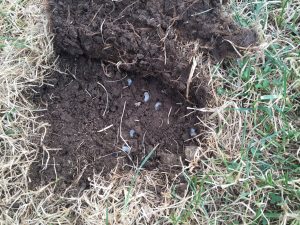Late Summer Grub Control

Did you know?
Grubs are beetle larvae that live underground and typically grow to about 1½ inches long. There are several species of white grubs, including the northern masked chafer, May or June beetle, black turfgrass ataenius, and Japanese beetle.
The bad news is . . .
Like you, beetles prefer healthy turf! Good turf and soil conditions are beneficial for the development of eggs and larvae, so female beetles prefer to lay their eggs in healthy turf stands.

When the eggs hatch in early summer, the larvae begin eating the roots and underground stems, destroying the root system. Soon the turf stand has the telltale signs of grub damage: wilted grass that can be pulled up like a carpet. To make matters worse, animals like blackbirds, skunks, and raccoons feed on grub larvae and cause additional damage to the turf.
Here are some best practices to keep in mind when working to remedy grub damage:
Later in the summer, you can scout for grubs and perform a curative application of clothianidin or Bayer’s Dylox® in August or September. Aerating the turf and removing thatch is also helpful in preventing grub damage for next season. Five to ten grubs per square foot can cause substantial damage, so don’t neglect treatment! Follow these methods to minimize grub damage on your playing field.







